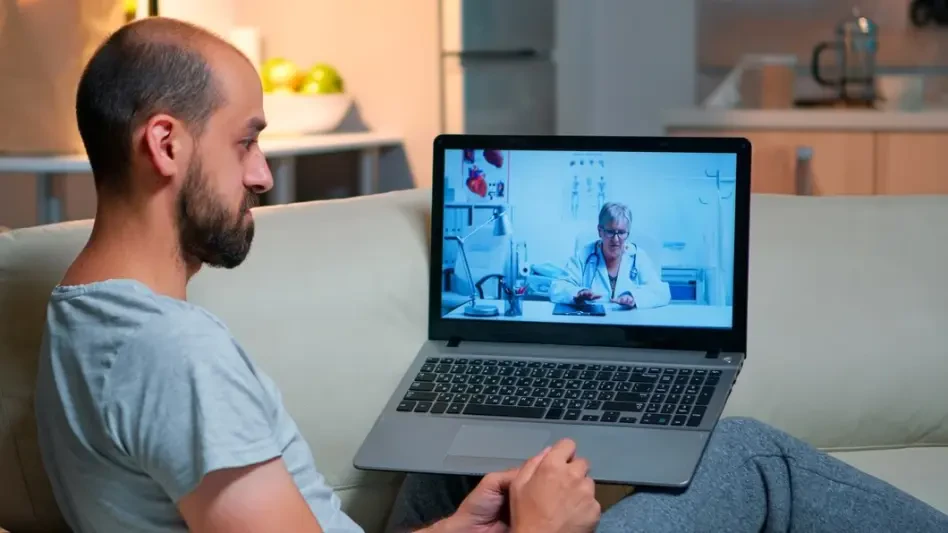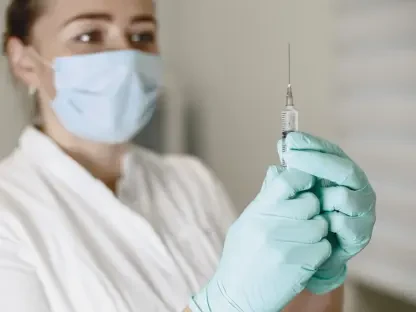I’m thrilled to sit down with Faisal Zain, a renowned healthcare expert with a deep background in medical technology. With years of experience in the manufacturing of diagnostic and treatment devices, Faisal has been at the forefront of driving innovation in healthcare delivery. Today, we’re diving into the critical issues surrounding the potential expiration of Medicare telehealth waivers and the Acute Hospital at Home program, exploring their impact on patients, providers, and the broader healthcare landscape amidst looming government funding challenges.
Can you walk us through what the Medicare telehealth waivers and the Acute Hospital at Home program are, and why they’ve become so vital to both patients and healthcare providers?
Absolutely. The Medicare telehealth waivers, introduced during the pandemic, expanded access to virtual care by allowing patients to have medical visits from their homes, whether they’re in rural or urban areas, and by enabling a wider range of providers, like physical therapists, to offer these services. This has been a game-changer for accessibility, especially for folks who struggle to travel to a clinic. The Acute Hospital at Home program, on the other hand, lets certain patients receive hospital-level care in their own homes, with monitoring and daily check-ins from healthcare teams. It’s a lifeline for patients who might not need a full hospital stay but still require intensive care, reducing stress and infection risks while freeing up hospital beds. For providers, these programs improve efficiency and patient satisfaction, but they’re heavily reliant on federal support to keep going.
How do these telehealth waivers specifically improve access to care for patients, especially those in underserved areas?
The telehealth waivers break down huge barriers. Before, many patients, especially in rural areas, had to drive hours for a simple follow-up or specialist visit. Now, they can connect with a doctor via video from their living room. It’s not just about convenience—it’s about getting timely care for people who might otherwise delay treatment due to distance or mobility issues. Even in urban settings, it helps busy or elderly patients avoid the hassle of in-person visits. Plus, by expanding who can provide telehealth, like occupational therapists, patients get more comprehensive care without jumping through hoops.
What are the key benefits of the Hospital at Home program for patients who might otherwise be in a traditional hospital setting?
The Hospital at Home program is transformative for eligible patients. It allows them to recover or manage acute conditions—like heart failure or pneumonia—in the comfort of their own home, surrounded by family, while still getting hospital-grade care through daily visits and remote monitoring. This setup cuts down on the risk of hospital-acquired infections, which is a big concern, and often boosts mental well-being since patients aren’t stuck in an unfamiliar, sterile environment. It’s also often more cost-effective for the healthcare system, though it requires significant coordination and resources to pull off safely.
What could happen if Congress fails to pass a funding bill by the October 1 deadline to keep these programs alive?
If that deadline passes without action, we’re looking at a major disruption. The telehealth waivers would lapse, meaning many of the flexibilities—like home-based visits or coverage for certain providers—would vanish overnight. The Hospital at Home program would also lose its authority, and hospitals have been instructed to either discharge patients or transfer them back to traditional facilities by the end of September if no extension is granted. This isn’t just paperwork—it’s a real threat to continuity of care for thousands of Medicare beneficiaries who rely on these services.
How would the loss of telehealth flexibilities impact patients’ ability to get the care they need?
It would be a huge setback. Patients who’ve come to depend on virtual visits—whether due to living far from providers, having mobility challenges, or just needing regular check-ins—might suddenly find themselves cut off. They’d have to go back to in-person visits, which isn’t always feasible. For some, especially in rural areas, it could mean delayed care or no care at all. It’s not just about inconvenience; it’s about health outcomes worsening because access is restricted.
What challenges do hospitals face if they have to discharge or transfer Hospital at Home patients back to brick-and-mortar facilities due to a funding lapse?
It’s a logistical nightmare. Imagine having to suddenly move hundreds of patients who are stable at home back into hospital beds or discharge them without a clear follow-up plan. Not only does this disrupt patient care and potentially harm recovery, but it also strains hospital capacity—beds might not even be available. Plus, the emotional toll on patients and families is significant; they’ve adapted to a home-based care model, and now they’re uprooted. For hospitals, there’s also the administrative burden and cost of coordinating these transitions under such tight deadlines.
Why are these critical healthcare programs caught up in the larger battle over government funding?
It’s largely because they’re tied to the broader federal budget process. These programs require explicit Congressional approval to continue, and right now, they’re part of negotiations over a short-term funding bill to keep the government running. Unfortunately, healthcare extensions often get bundled with other contentious issues, like subsidies for Affordable Care Act tax credits, which are also on the table. So, instead of being treated as standalone priorities, they’re pawns in a bigger political chess game, which delays decisions and creates uncertainty.
How are political parties approaching this issue within the context of the funding negotiations?
There’s a clear divide. Democrats are pushing hard to link the extension of these healthcare programs with other priorities, like maintaining Affordable Care Act subsidies, and they’re withholding votes on the funding bill until they get concessions. Republicans, meanwhile, are focused on passing a clean, short-term funding resolution to avoid a shutdown, but they’re facing internal pressure not to give in on broader healthcare spending. Despite bipartisan support for telehealth and Hospital at Home on paper, the programs are stuck in this partisan tug-of-war, risking a lapse if no compromise is reached.
How are health systems and virtual care companies bracing for the possibility of a government shutdown?
It’s a mixed bag. Many are in a holding pattern, hoping for a last-minute extension while preparing for the worst. Some are developing contingency plans, like scaling back telehealth offerings or pausing new Hospital at Home enrollments, to avoid financial exposure if reimbursement stops. Others, especially larger systems with deeper pockets, are weighing the option of continuing services without guaranteed payment, betting on retroactive reimbursement once a deal is struck. It’s a high-stakes gamble, and the uncertainty is creating a lot of stress across the board.
What risks do providers face if they choose to keep offering these services during a shutdown without assurance of payment?
The biggest risk is financial. If Congress doesn’t act to restore funding or allow retroactive billing, providers could be left holding the bag for millions in uncompensated care. There’s also a legal gray area—without clear guidance from federal agencies, they might face compliance issues or penalties for operating outside expired waivers. Despite this, some are willing to take the chance because they believe in the value of these programs and trust that political support will eventually come through. It’s a bold move, driven by a commitment to patients, but not without serious downside.
Why are some health systems better positioned to weather a funding lapse compared to others?
It comes down to financial stability. Larger health systems or those with stronger cash reserves can absorb the cost of providing care without immediate reimbursement, at least for a while. They’ve got the infrastructure and budget to take that risk. Smaller providers or those already operating on thin margins—like rural hospitals—don’t have that luxury. A shutdown could force them to cut services entirely, as they can’t afford to operate at a loss, even temporarily. This disparity could widen existing gaps in care access.
Looking back, how has the history of extending these programs played out in recent years, and why do we keep seeing last-minute decisions?
Since the public health emergency ended, these programs have been extended multiple times—often just for a few months at a time, like the three-month extension last December or the six-month one in March. We’re talking over five years of temporary fixes. The last-minute nature comes from how these extensions are tied to larger funding battles in Congress. Lawmakers on both sides agree these programs are worth saving, but they get overshadowed by bigger budget debates, so extensions are rushed through as stopgaps rather than permanent solutions. It’s frustrating for everyone involved, especially patients and providers who need long-term certainty.
What is your forecast for the future of telehealth and Hospital at Home programs, given the ongoing political and funding challenges?
I’m cautiously optimistic. The bipartisan support for these programs is strong—lawmakers know they deliver real value to constituents, and the data shows they can save costs without sacrificing quality. I think we’ll see another short-term extension soon to avoid a total collapse, but the bigger fight for permanent policy is still ahead. The challenge will be decoupling these initiatives from broader funding disputes so they can stand on their own merit. In the long run, I believe telehealth and Hospital at Home will become mainstays of our healthcare system, but it’s going to take sustained advocacy and clearer legislative focus to get there without these constant cliffhangers.









